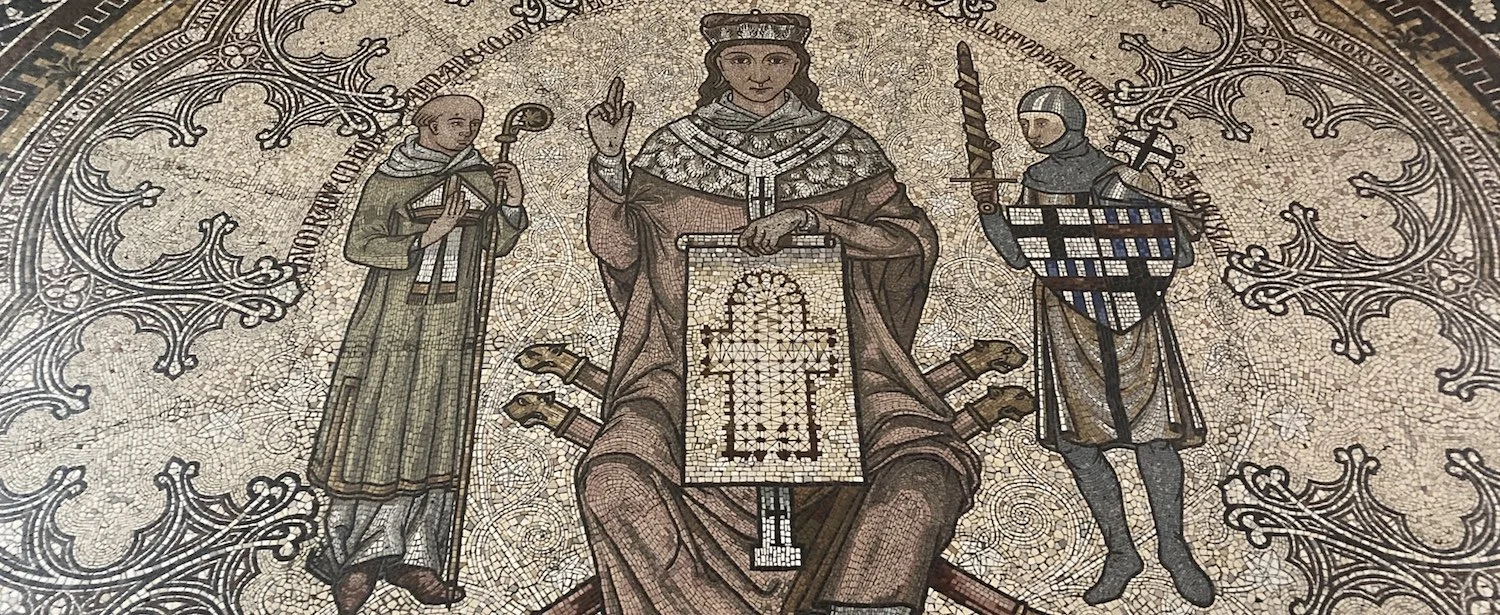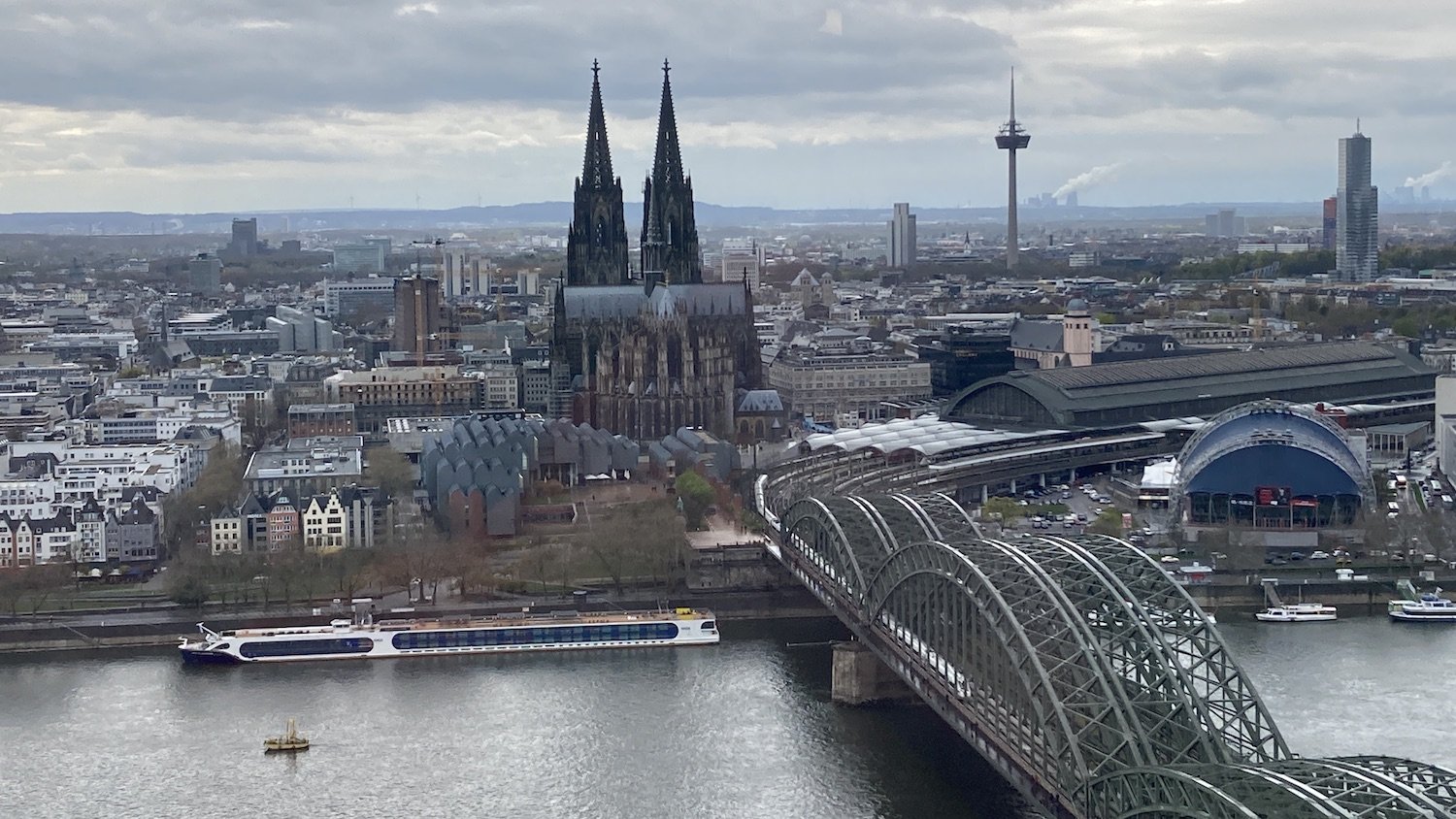A light rain was falling in Köln (Cologne) when we hopped off the train. I zipped up my jacket and got final instructions. We aimed to meet at six for dinner.
“Do you have some Euros if you need to go to the bathroom?” She was taking good care of me.
I jangled the coins in my pocket. “All good.”
Satisfied, she adjusted her pack, wheeled, and headed up the street. I watched her disappear and was very proud of my daughter. She was helping organize and distribute donated items for the children of Ukrainian refugees. The refugees of war were living in a temporary compound erected in a parking lot.
A photo from the twitter site @OpBackPack4Kids. Operation BACKPACK4KIDS is a grassroots effort by pilots from FedEx and UPS dedicated to putting backpacks loaded with useful items in the hands of Ukranian refugees in Germany.
Structures of hope come in many colors, sizes, and shapes.
I turned my attention to the ever-present Dom.
“Dom” is short for the Hohe Domkirche Sankt Petrus or the “Cathedral Church of Saint Peter.” The structure is the iconic symbol of the city of Köln. Its twin steeples are featured on signs, coins, bags, pastries, and everything touristy. With an average of 20,000 visitors per day, the Dom is the most popular landmark in all of Germany. I was excited to have the afternoon to poke around the cathedral itself, see its relics, and climb the steeple for the view.
The twin towers of the Dom rise from the center of Köln (Cologne), Germany. The Rhine River flows in the foreground.
Poking around the structure
The Dom has all the qualities of a “French-style”—Opus Francigenum—work. The neck-wrenching height of the building and light-filled interior spaces are features of High (or Rayonnant) Gothic (see our discussion of Gothic developments in the context of Spanish churches here.). Construction of the Dom began in 1248 and continues to this day.*
The twin-steeple façade of the Dom is astounding. Decoration fills every fold, nook, and edge.
I stood in Cathedral Square near the western entrance. I was joined by a handful of tourists and a chalk artist hoping for their coins. The west façade—the largest of any church in the world—hung over our heads like layers upon layers of stone drapes. Extravagant decoration filled every fold, nook, and edge. Statues were pressed into crannies around the entrance. Knobs lined the steep roofline. Gargoyles peered down from their lofty perches. Water washed these features and gave them a glossy sheen. This same rain also carried the acid that stained the light sandstone dark. It felt somehow ancient, monstrous, beautiful.
I read (or heard?) somewhere that this is not by accident. The outside of a cathedral faces a fallen world. Its exterior walls are borders between the profane and the sacred, a line that demarcates a place of sanctity and hope.
From the square, it was difficult to appreciate the cross-shaped footprint. The nave (475 feet) ran away to the east and was crossed by a transept (282 feet). Aisles on either side of the nave covered even more air. The Dom can reportedly hold up to 20,000 individuals, making it the third-largest dedicated church-structure in the world. The catholic minds responsible for this design did not think small. They built for the glory of God himself.
Top plan of the Köln Cathedral. Image on left from https://germanculture.com.ua/wp-content/uploads/2018/05/cologne-cathedral2-918829_960_720.jpg (accessed 5/27/22) and image on right courtesy of Wikipedia, s.v. “Cologne Cathedral” (accessed 5/27/22).
No surprisingly “super-size-me attitude” goes vertical as well.
Other than the Lutheran church of Ulmer Münster, the steeples of the Köln Cathedral are the tallest in Europe. Rumor has it that Lutherans deliberately designed Ulmer Münster to top Köln by 14 feet! I guess Luther’s beef with Rome continues.
Dom shaped pastries. One sports the words, Frieden in Europa or “Peace in Europe,” a obvious reference to the war in Ukraine and another expression of hope.
Entry to the cathedral was free. There was no line. I approached an inspector at the middle portal. He was clad in a scarlet robe with black trim. He greeted me, looked at the camera and notebook in my bag, and waved me through.
I stepped out of the light rain into the Hohe Domkirche Sankt Petrus. I was eager to see what was inside this incredible structure of hope.
*Rumor has it that when cathedral of Köln is finished the world will end (Ahem. That’s a German joke.).
Reservations are now being received for our April 21-May 1, 2023 excursion to Greece. Bible Land Explorers will follow in Paul’s footsteps in the classical world, with stops at Thessaloniki, Amphipolis, Philippi, Neapoli (Kavala), Meteora, Delphi, Corinth, Mycenae, Epidaurus, and Sparta. Conclude this grand tour in Athens, the classical center of it all. Click here for the brochure. Early bird discounts apply. Direct all questions to BibleLandExplorer@gmail.com






